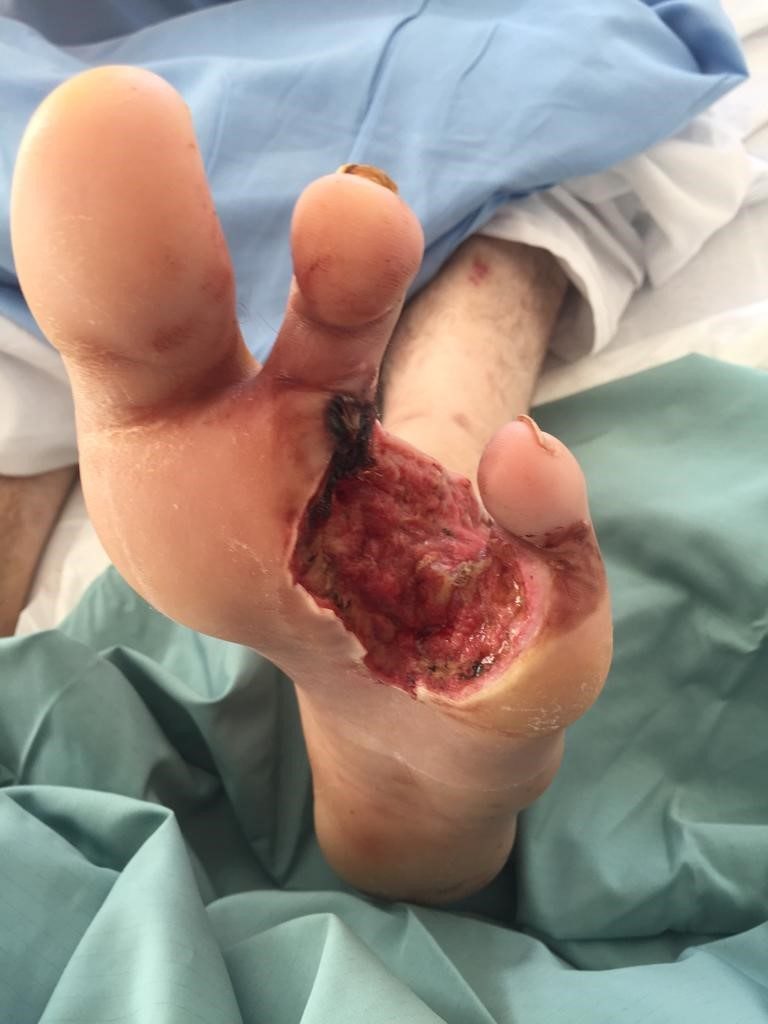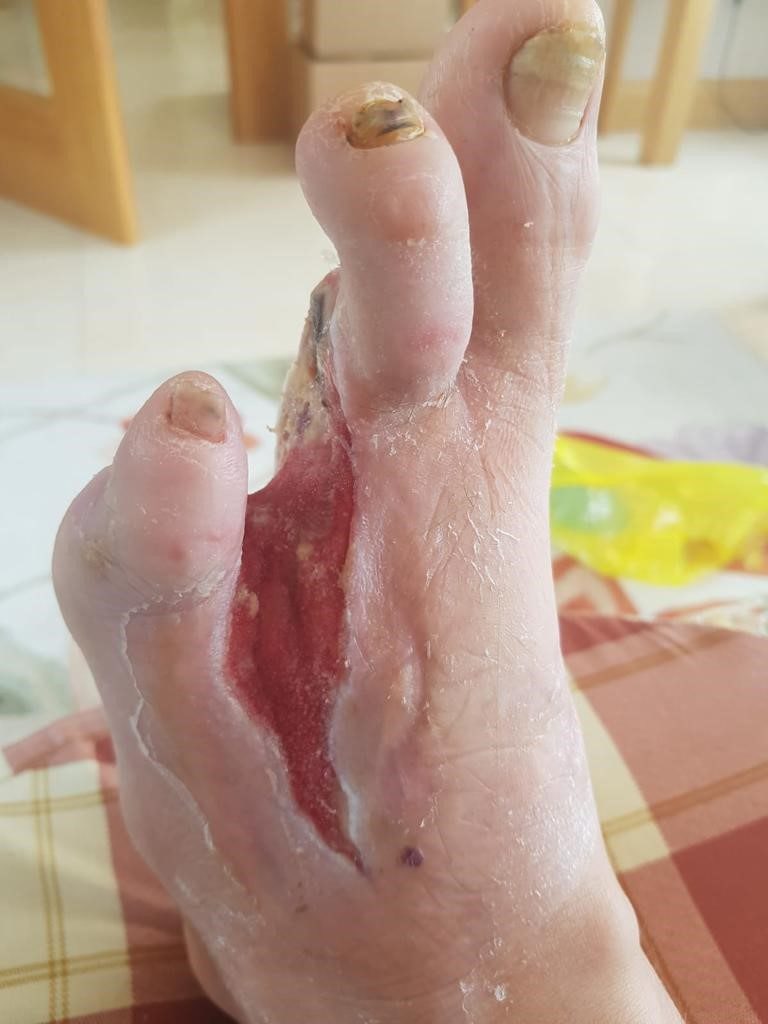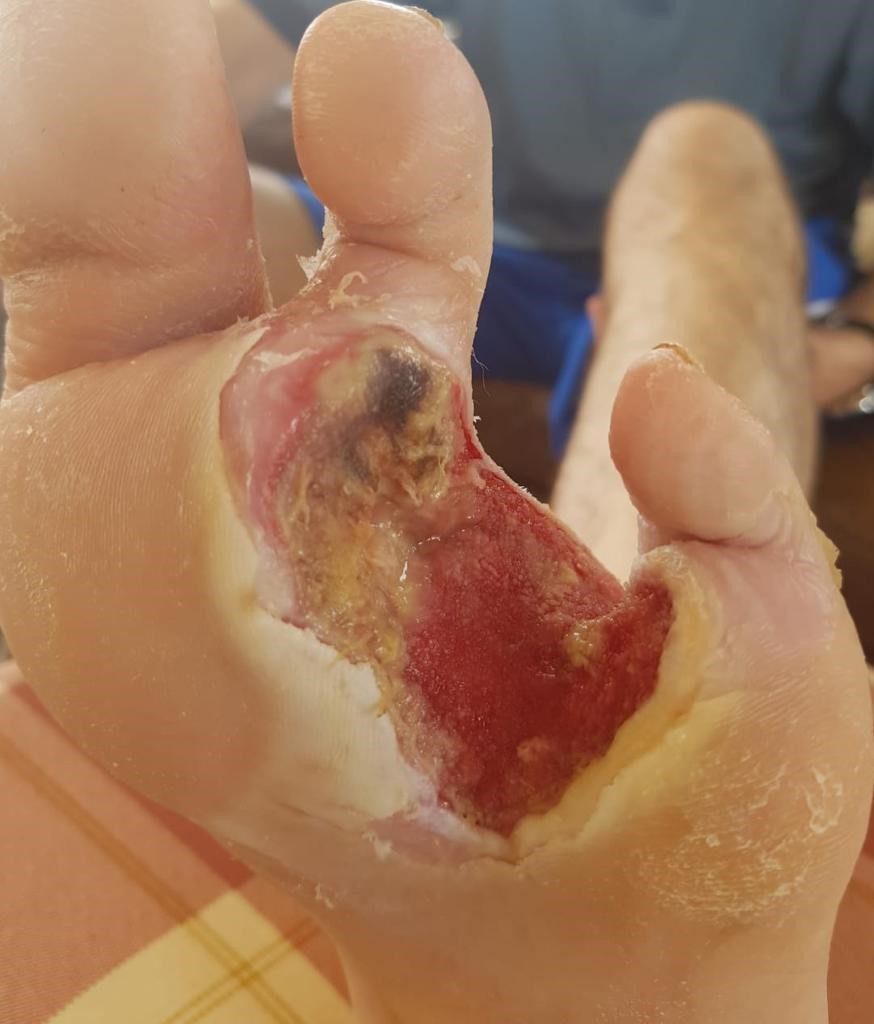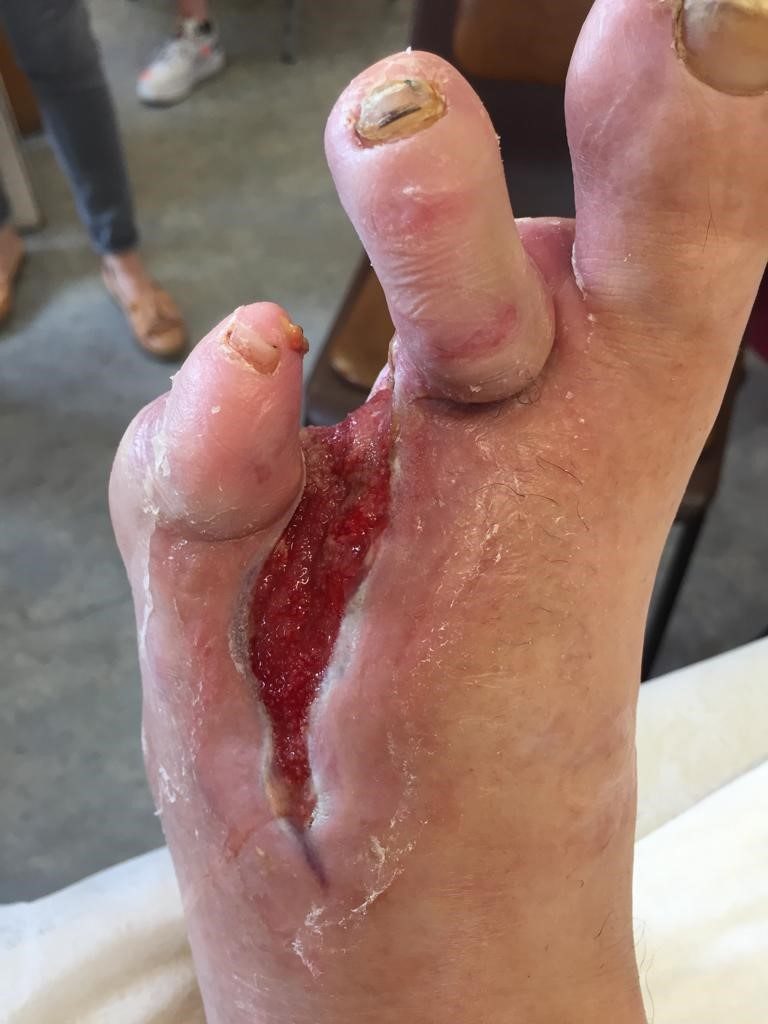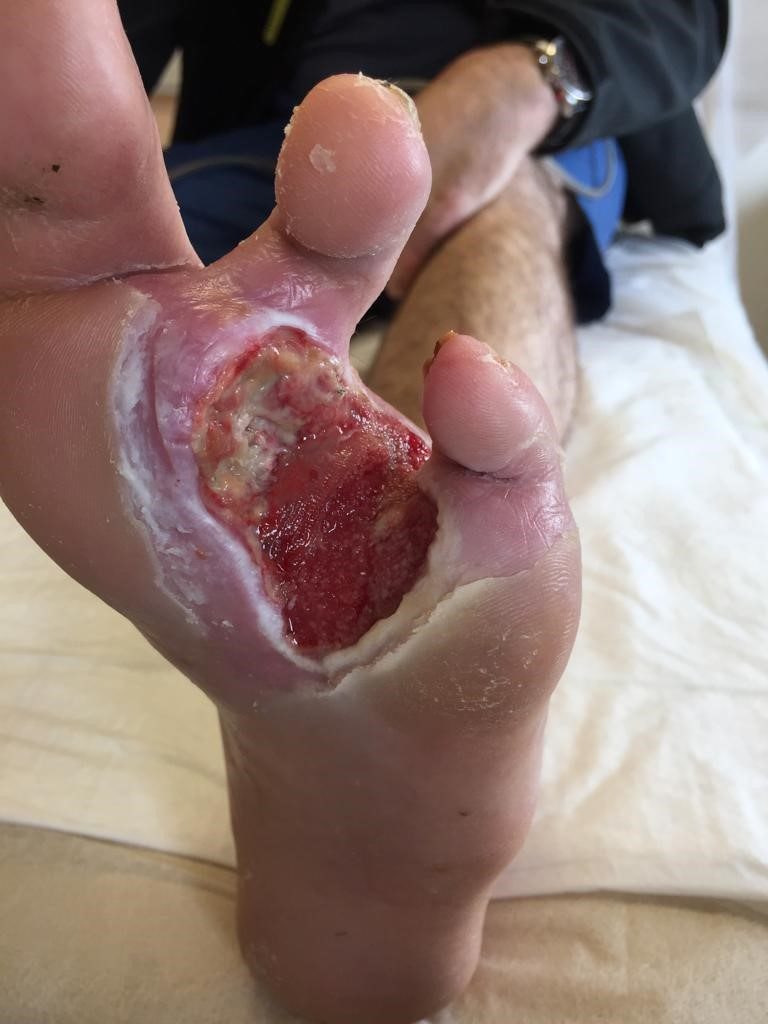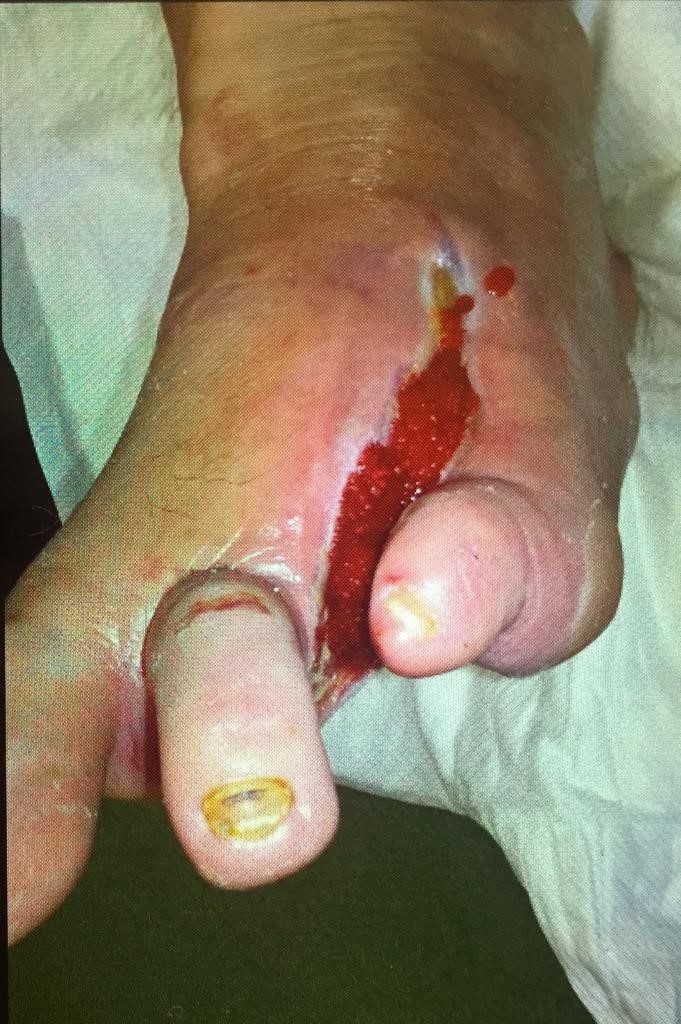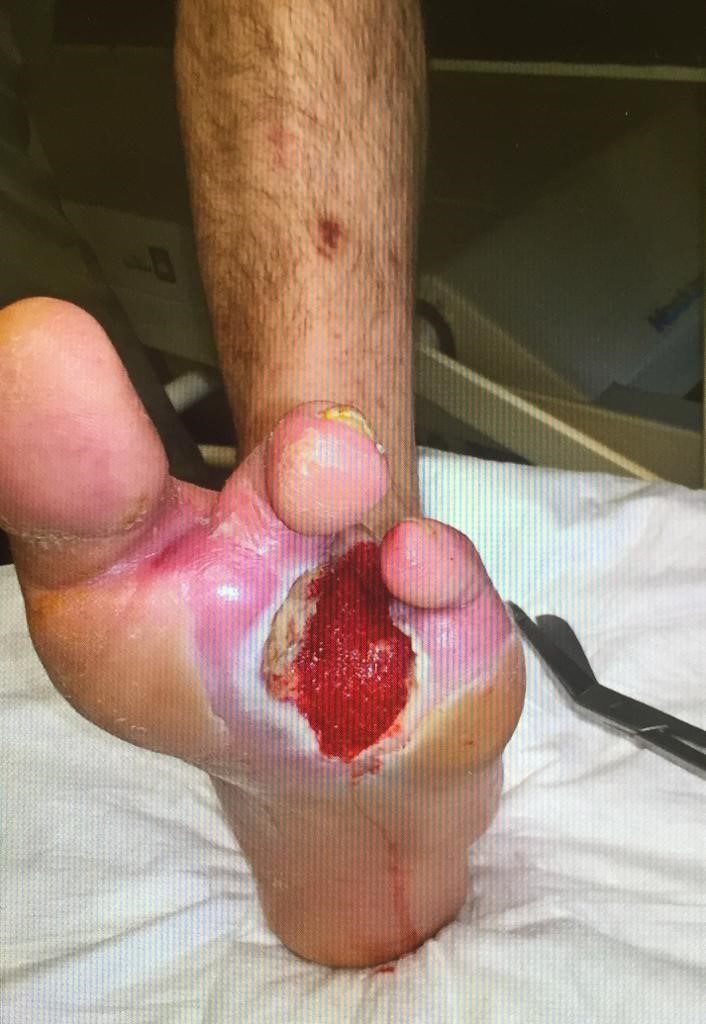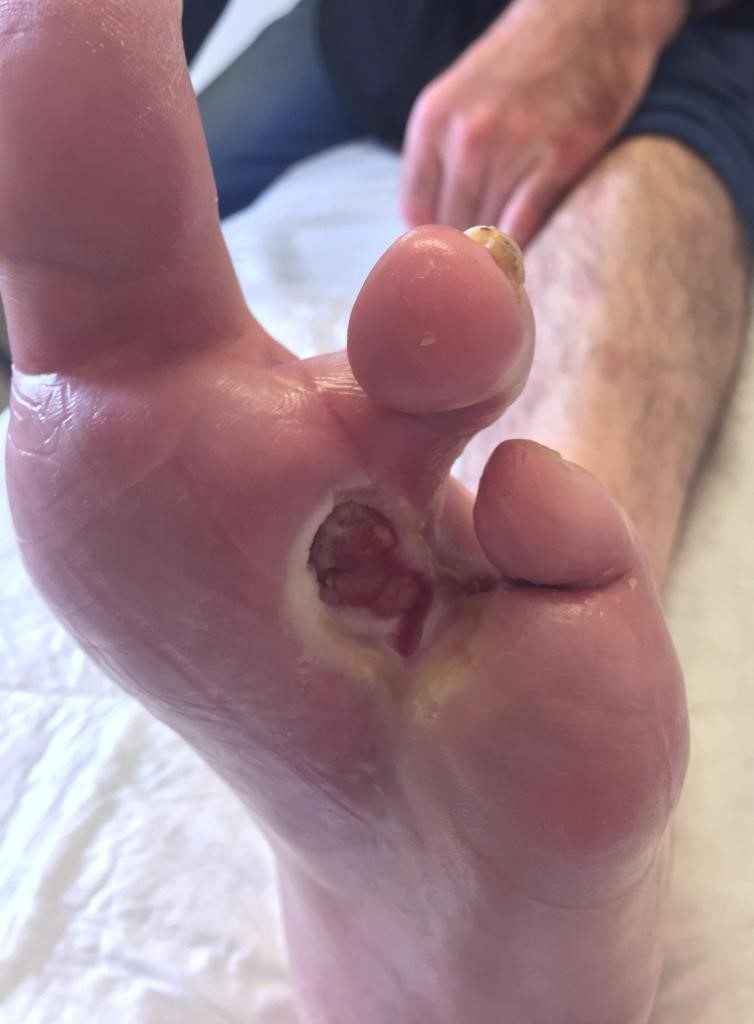Case Study
Introduction:
A 47 year old male with Type 1 Diabetes Mellitus, presented with a severe infection to his left foot. He sustained an injury to his foot after he stood on a nail which penetrated between his 3rd and 4th toes. He presented to his local hospital with concern of infection but was discharged on oral antibiotics. The wound failed to improve and infection continued to extend, with further deterioration. He was admitted one week later with gas-forming gangrene and required emergency surgery. This surgery consisted of amputation of 3rd and 4th toe, with wide debridement of surrounding tissues.
Methods:
The wound was left open to aid with drainage of pus. A VAC Veraflo was applied on 2nd day post-op. There was one area of the wound which had persistent slough tissue present, which required antimicrobial dressing under black foam. This aided the removal of slough, which lifted spontaneously. This allowed for less interference with the 2nd toe neuro-vascular bundle. On examination of the wound, it was noted that infection was subsiding, and it continued to granulate. There was a progressive decrease in wound dimension. The ankle brachial pressure index (ABPI) revealed normal circulation. The blood inflammatory markers were trending down on a daily basis. An Aircast Boot was fitted on the patient which allowed off-loading to the amputated area while mobilising for short periods.
Results:
Pus swab from the wound revealed:
Gram negative anaerobes isolated, identified as Prevotella Melaninogenicus.
Coagulase negative staphylococcus was isolated.
Viridans Group streptococcus isolated, identified as streptococcus mitis group.
The specific antibiotic regimen selected was based on the severity of the infection and the known causative organisms.
Discussion:
Although this wound was an acute wound, this patient was at risk of delayed wound healing following the severe infection and the aggressive intervention of amputation, it was decided to commence a VAC Veraflo before the wound deteriorated any further and complications occurring. VAC Veraflo is a non-invasive adjunctive therapy system and is used to promote healing in the acutely infected wounds. This system combines the use of negative pressure wound therapy (NPWT) and wound cleaning with topical solutions. Treatment is delivered in automated treatment cycles allowing wounds to be repetitively cleansed without the need for dressing removal. Following a five days of VAC Veraflo, it was decided to commence actiVAC vacuum assisted closure. This device helped to promote wound healing by the removal of fluid from the open wound, reduce oedema, and promote the formation of granualation tissue
As a consequence of Diabetic Foot Ulcer (DFU), a lower limb is lost every 30 seconds somewhere in the world. DFU is a complication of diabetes mellitus, and is considered one of the most common and devastating chronic complications of diabetes because DFU contribute to high morbidity, high mortality and high hospitalisation rates, all of which seriously threaten the quality of life of Diabetes Mellitus patient. Diabetic foot infections require coordinated management, preferably by a multidisciplinary foot-care team.
Conclusion:
In 2015, the National Institute for Health and Care Excellence (NICE) released new guidelines titled ‘Diabetic Foot Problems: Prevention and Management of Foot Problems in People with Diabetes’. These guidelines recommend the use of negative pressure wound therapy (NPWT): ‘consider negative pressure wound therapy after surgical debridement for diabetic foot ulcers, on the advice of the multidisciplinary foot care service’ (NICE). A reduction of the wound infection rate and the degree of bacterial load has been described as a secondary endpoint in several publications.
Using the VAC Veraflo resulted in a reduction of the wound infection and the degree of bacterial load.
